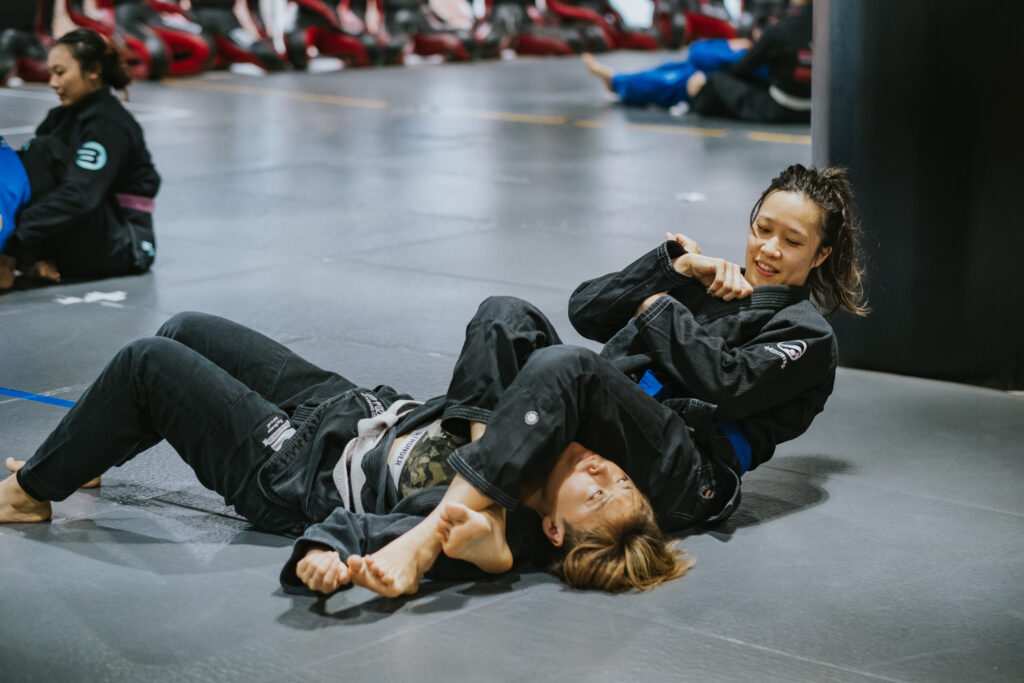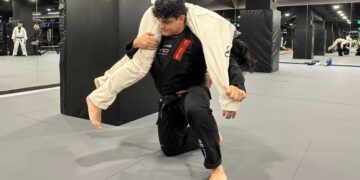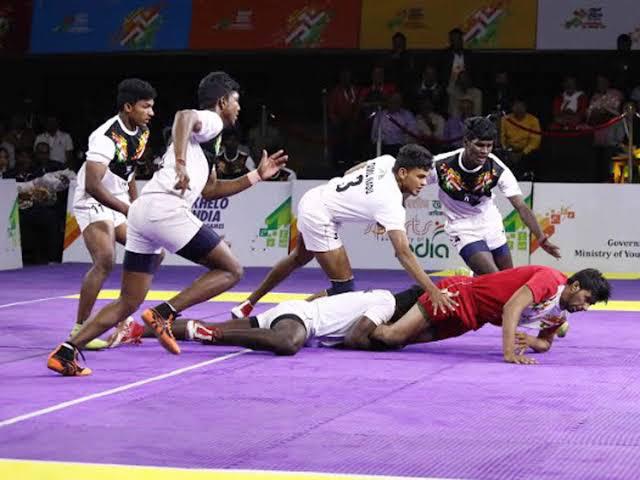BJJ is known for its constantly evolving submission game, and among the many ways to finish a match, the “bar” submissions stand out as some of the most fundamental and effective. These submissions, which typically involve hyperextending a joint in a straight line, combine leverage, timing, and technical control. In this article, we’ll go over the most common types of “bar” attacks in Jiu-Jitsu.
Types Of Submissions In BJJ
To appreciate the mechanics and impact of the “bar” submissions, it helps to understand the broader types of submissions in BJJ. Generally, submissions fall into three categories: joint locks, chokes and strangles, and compression locks. Joint locks target the body’s hinge points like the elbows, shoulders, knees, and ankles. Chokes restrict blood or airflow, forcing a tap from discomfort or the threat of unconsciousness. Compression locks crush muscle or bone tissue and are less common but still effective in certain scenarios. Among these, joint locks are often the most versatile and accessible, especially when it comes to attacking the limbs.
Attacking The Limbs
When you’re targeting the limbs in BJJ, the idea is to isolate a single arm or leg, control it fully, and apply pressure to the joint in a way that forces your opponent to submit. Limb attacks allow for a wide range of entries and transitions. For example, if someone defends an armbar correctly, you might consider switching to a triangle choke or an omoplata. Similarly, if you go for a kneebar and your opponent starts to turn out, you can often follow up with a heel hook. Limb attacks offer options. They keep your opponent on the defensive and give you room to explore your creativity in the middle of a roll or match.
The “Bar” Submissions: Armbar, Kneebar, Dogbar, And More
The common thread with bar submissions is the straight line leverage that attacks the joint directly. These techniques are powerful, technical, and often surprisingly simple once you understand their mechanics.
The armbar, also known as juji gatame, is probably the most iconic submission in BJJ. It targets the elbow joint by locking your opponent’s arm between your legs and using your hips as a fulcrum. You’re pulling the wrist in one direction while controlling the shoulder, and if done properly, the submission comes on fast and clean. You can hit this from closed guard, mount, side control, or during transitions, which makes it extremely versatile.
The kneebar is essentially the same concept, but applied to the leg. You isolate your opponent’s leg, control the hip and ankle, and extend the knee beyond its natural limit. This submission can be just as fast and dangerous as an armbar, especially when you enter it from positions like Ashi Garami or after sweeping your opponent. It requires solid control of the knee line and the ability to adjust your angle quickly.
Then there’s the dogbar, which is a bit less known but just as effective in the right hands. The name comes from the awkward angle the opponent’s arm takes, kind of like a dog lifting its leg. It often starts as a kimura grip from positions like north-south or side control, but instead of finishing as a shoulder lock, the submission straightens the arm at an odd diagonal, applying pressure in a unique direction. It’s a great option when traditional finishes are hard to come by.
You also have the reverse armbar, sometimes called a straight armlock, which works the elbow from the opposite angle of a classic armbar. It often comes into play from mount or side control and can catch an opponent off guard if they’re defending other submissions. Another variation, sometimes called the shoulder bar, blends elements of the dogbar and kimura, focusing on isolating the arm in a bar-style fashion but attacking the shoulder more directly.
Basic Application

Submissions like armbars, kneebars, and dogbars can be hit from nearly any position—what matters most is timing, control, and smooth execution.
These submissions work from almost anywhere, which is part of what makes them so powerful. You can apply armbars from guard, especially the closed guard, or from the mount when your opponent starts pushing against your chest. From back control, if the choke isn’t there, switching to an armbar can finish the job.
Kneebars can come from the top or bottom. You might spin into one during a scramble, catch one off a failed sweep, or even hit one from standing if your timing is right. Dogbars and their cousins are often used during transitions. If someone is defending your kimura or framing against side control, there’s often a small window to isolate the arm and redirect it into a dogbar.
No matter the position, the key is timing and control. You’re not just grabbing a limb and pulling. You’re setting up the attack, neutralizing their ability to move, and applying the finish smoothly.
Technical Considerations
Precision is everything with these submissions. You need to control the joints above and below the one you’re attacking. So for an armbar, that means keeping the shoulder and wrist locked in place. For a kneebar, it’s all about controlling the hip and ankle. Without this control, your opponent will escape or defend easily.
Your hips play a huge role, too. They act as the base of the lever. The closer your fulcrum is to the joint, the more power and control you’ll have. That’s why good positioning matters so much when you’re finishing. The pressure also needs to be directed straight into the joint. If your angle is off or if you’re twisting instead of extending, you might lose the submission or give your opponent a chance to roll out or counter.
Finally, understand the difference between pain compliance and actual breaking mechanics. While some people will tap from discomfort, a clean bar submission should work whether or not your opponent is willing to tolerate the pain. Stay focused and controlled to keep your training safe and effective.
Drilling And Practice

To sharpen your bar submissions, drill them often, add resistance gradually, and use flow rolling to connect entries and build fluid transitions.
If you want to get good at bar submissions, you need to drill them regularly. Start by working on clean reps of each submission from common positions. Focus on your angles, grips, and control.
Next, introduce light resistance. Have your training partner try to defend a little, so you learn how to make adjustments on the fly. Over time, add in positional sparring, where one person starts in an armbar or kneebar setup and works to finish while the other defends.
Flow rolling is another great way to build fluidity. Try transitioning from one submission to another and exploring how different entries connect. The more time you spend here, the more natural these submissions will feel.
Conclusion
Bar submissions in BJJ, like the armbar, kneebar, dogbar, and their many variations, are foundational tools that offer both reliability and room for creativity. Whether you’re a beginner learning the basics or a seasoned grappler refining your details, mastering the mechanics and timing of these submissions can take your game to the next level. Keep drilling, stay curious, and respect the tap!
You may also like:
Solo Grappling: How To Drill Takedowns And Transitions Without A Partner
Along with its rich cultural heritage, Brazil is one of the most respected countries in grappling and is widely regarded as a powerhouse. Creating its own identity, Brazil’s distinctive approach to fighting has shaped what…
In Brazilian Jiu-Jitsu and Submission Grappling, solo grappling drills help to keep your skills razor-sharp even on days you don’t have anyone to roll around on the ground with. These exercises allow you to get…
High-intensity interval training (HIIT) alternates all-out efforts with brief rest or low-intensity periods. Unlike steady-state cardio, HIIT exercises, martial arts such as Muay Thai, and some aspects of BJJ, pushes you into anaerobic zones. Think…
Feeling a little anxious heading into your first sparring session in martial arts is perfectly normal. You’ve never had the chance to test your skills against resisting opponents, and you’re unsure about how well you’ll…
Brazilian Jiu-Jitsu is known for its highly technical ground game, but the truth is every match begins standing. Whether it’s a competition setting, a self-defense scenario, or an MMA fight, learning how to bring your…
In Brazilian Jiu-Jitsu, facing an unorthodox position like the inverted guard can be overwhelming, especially for newer practitioners or those more familiar with traditional passing sequences. The inverted guard flips the script, quite literally, and…
The term “smesh” became globally popular thanks to MMA superstar Khabib Nurmagomedov, but there’s much more to this than just a catchy quote. Behind it lies a brutal, relentless, and highly effective grappling system deeply…
Tennis balls aren’t just for tennis players. They’re also a valuable tool for boxers looking to enhance their agility, coordination, and reflexes. Incorporating tennis ball drills into your boxing training regimen can significantly improve your…
Teen Muay Thai sensation Johan Ghazali may be facing adversity, but his journey is far from over. Here’s why his youth, talent, and experience in the world’s toughest arena means that his comeback could be…
Finding the ultimate cardio activity can make training feel like the best part of your day, instead of being just another box to check in your daily calendar. You love a good sweat session, but…
In Singapore, modern life often means spending hours sitting in a chair on most days. Working at your desk, commuting on the MRT, and streaming marathons all add up to a whole lot of sitting,…
Bullying often brings out all sorts of negative emotions in children, and parents usually don’t know how to start the conversation. Children tend to be hesitant to admit they’re getting bullied because it often makes…






































